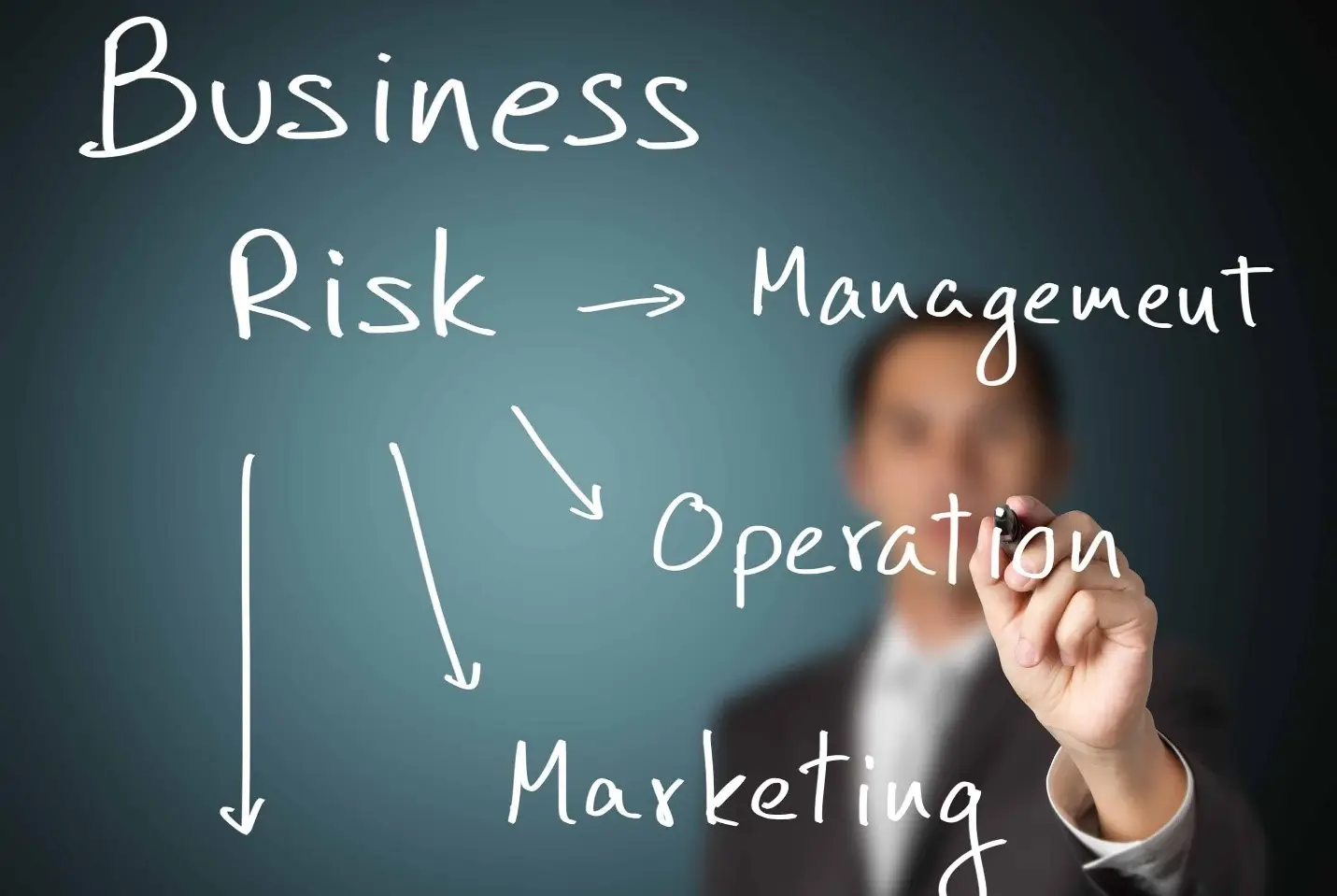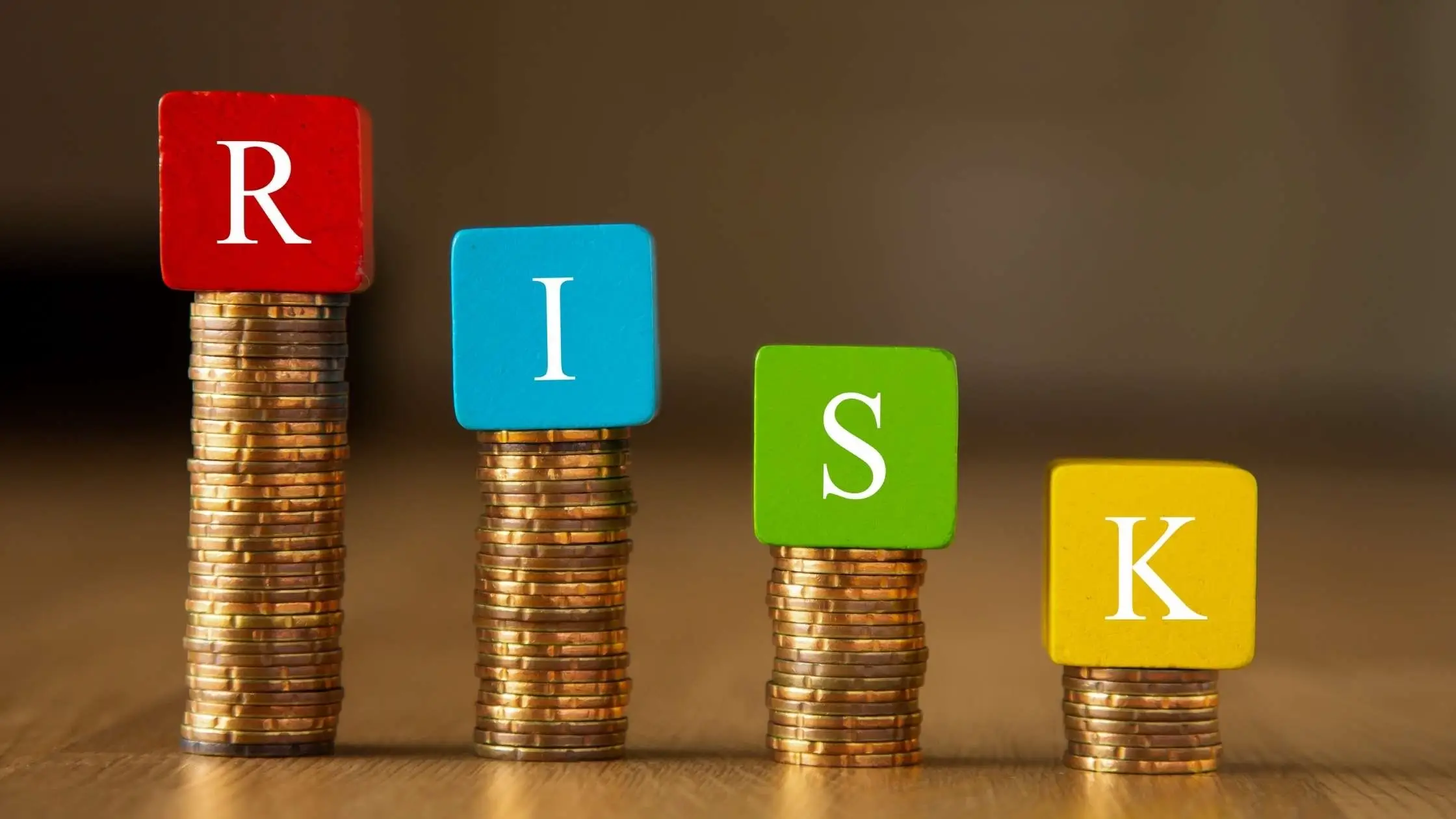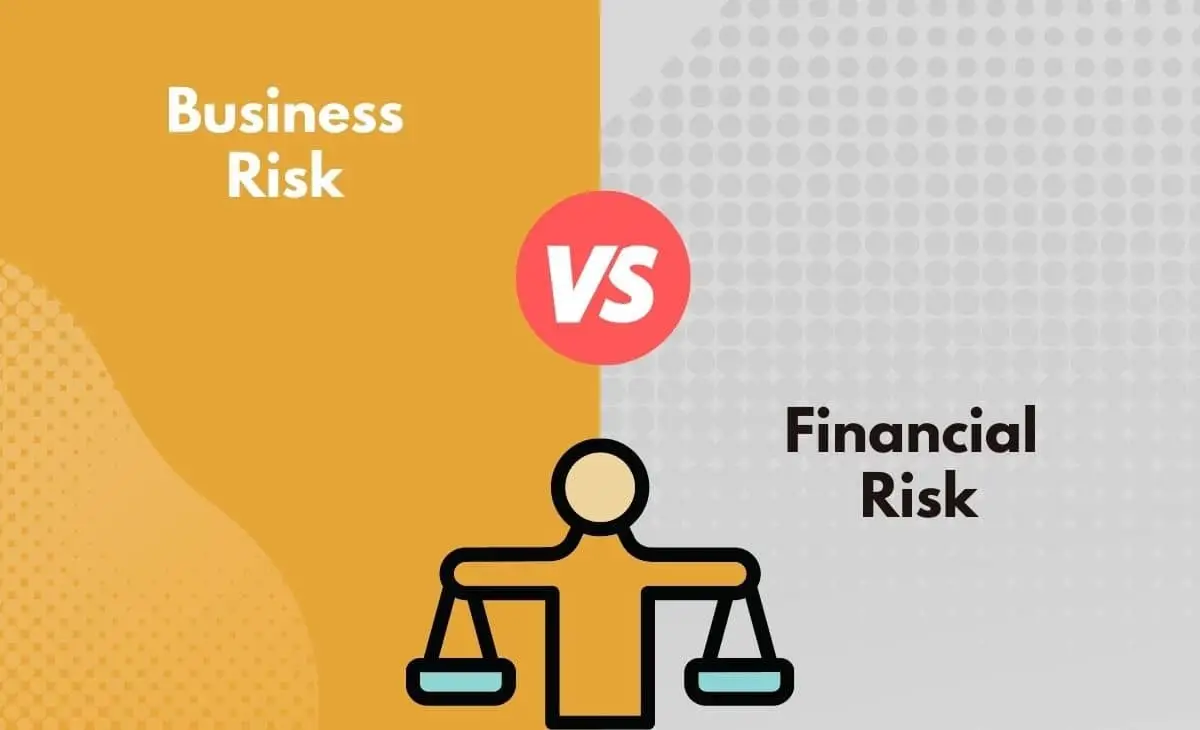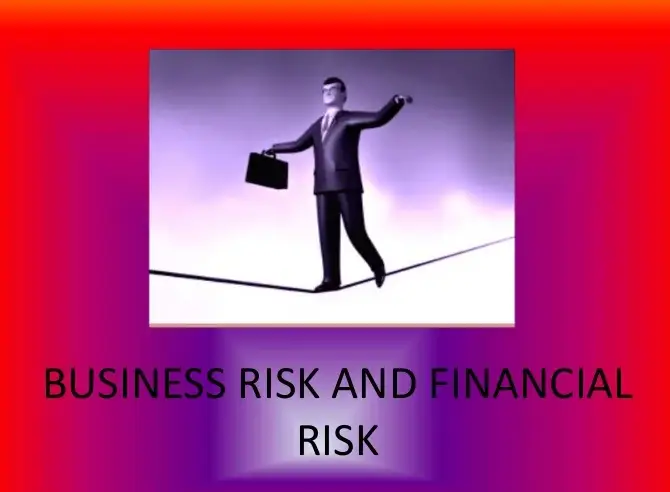Physical Address
304 North Cardinal St.
Dorchester Center, MA 02124
Physical Address
304 North Cardinal St.
Dorchester Center, MA 02124

Risk, broadly defined, is the potential for harm or loss. In business and finance, however, risk has a more specific meaning. Business owners face numerous risks when operating their enterprises; some of these risks are business risks while others are financial risks. Business risk is the possibility that the company’s owners won’t be able to manage the operation profitably. Financial risk refers to the likelihood that investors will not receive the return on their investment that they expect given the level of risk involved.
To get a clear picture of these terms, we will explore them in-depth in this article and see what factors make them different.

Business risk is the potential for an organization or corporation to experience reduced profitability or failure. Business risk can be considered anything that threatens the ability of a firm to meet its financial objectives. Business risk can be produced by a variety of elements coming together. Sometimes a company’s top management or leadership generates circumstances in which a corporation may be more exposed to risk.
However, a corporation may not always be responsible to blame for the danger. This makes it impossible for a business to totally protect itself from risk. However, the risks that come with running a business can be reduced overall; most businesses do this by implementing a risk management strategy. There are 4 types of business risk. These are compliance, operational, reputation, and strategic risks.

Compliance risk: Compliance risk mostly appears in heavily regulated businesses and areas. For instance, a three-tier distribution structure in the wine industry mandates that wholesalers in the United States sell wine to a retailer. In some areas, this arrangement makes it illegal for vineyards to sell their goods directly to retail establishments.
Operational Risk: Operational Risk is the category of business risk which develops within the corporation, mainly when a business or regular operations go in a certain wrong way. For instance, in 2012, while the internal anti-money laundering operations team at the global bank HSBC could not stop money laundering in Mexico effectively, it faced a significant level of operational risk and, as a result, was hit with a sizable fine from the U.S. Department of Justice.
Reputation Risk: Anytime a business’s reputation is damaged, whether due to an incident brought on by a past business risk or another circumstance, the danger of losing clients and seeing brand loyalty diminishes. In the wake of the fine imposed for subpar anti-money laundering procedures, HSBC’s reputation suffered.
Strategic Risk: When a company doesn’t run according to its plan or business model, strategic risk occurs. A company’s strategy gradually becomes less effective when it doesn’t follow its business model, and it may find it difficult to accomplish its stated objectives. A strategic risk for Walmart arises, for instance, if Target decides to undercut Walmart’s prices while Walmart actively presents itself as a low-cost provider.

The danger of financial risk is losing money in an investment or commercial enterprise. Credit risk, liquidity risk, and operational risk are a few more typical and distinct financial hazards. Financial risk is a type of risk that could cause interested parties to lose money. This may result in governments losing control over monetary policy and defaulting on bonds or other debt obligations. Corporations may fail in an attempt that places a financial burden on the company and the danger of defaulting on debt they take on. There are 5 major types of financial risks. These include market risk, credit risk, liquidity risk, legal Risk, and Operational Risk.

Market Risk: This kind of risk develops due to changes in financial instrument prices. Directional Risk and Non-Directional Risk are two categories of market risk. Directional risk can result from changes in stock prices, interest rates, and other factors. On the other hand, volatility hazards can be associated with non-directional risk.
Credit risk: It is the sort of risk that results from breaching one’s obligations to counterparties. Sovereign Risk and settlement risk are two categories of credit risk. Foreign exchange policies that are challenging to implement often result in sovereign risk. On the other hand, settlement risk develops when one party pays but the other does not carry out the agreements.
Liquidity Risk: This kind of risk results from a failure to complete transactions. Asset Liquidity Risk and Funding Liquidity Risk are two categories of liquidity risk. Asset liquidity risk develops when there aren’t enough sellers or purchasers to buy and sell orders.
Legal Risk: This kind of financial risk results from legal restrictions like lawsuits. A legal risk exists whenever a business must endure monetary damages as a result of legal proceedings.
Operational Risk: This type of risk results from operational failures like poor management or technological errors. Fraud risk and model risk are two categories of operational risk. Lack of controls and improper implementation of models increase the risk of fraud.


By systematizing the manufacturing and operation process and lowering production and operation costs, businesses can reduce risk by boosting equity funding and decreasing debt financing while at risk financially. The distinctions between business risk and financial risk are numerous. First, business risk concerns judgments about operations and pricing, whereas financial risk concerns decisions about how to finance a company. Second, although the financial risk may be minimized by changing the financing mix to favor a higher proportion of equity over debt, business risk can be lowered by making well-informed decisions. Thirdly, whereas financial risk affects net income, business risk affects income from operations. And finally, changes in interest rates do not affect business risk. However, they significantly influence financial risk, which rises when rates rise and falls when rates decrease.
As you have likely heard countless times, you won’t make any money if you don’t take the risk. Therefore, Risk and Return are strongly associated. Financial risk is a subset of business risk. Business risk cannot be avoided, but the financial risk can be. The distinct features of business risk and financial risks can be found co-related but are significantly different.